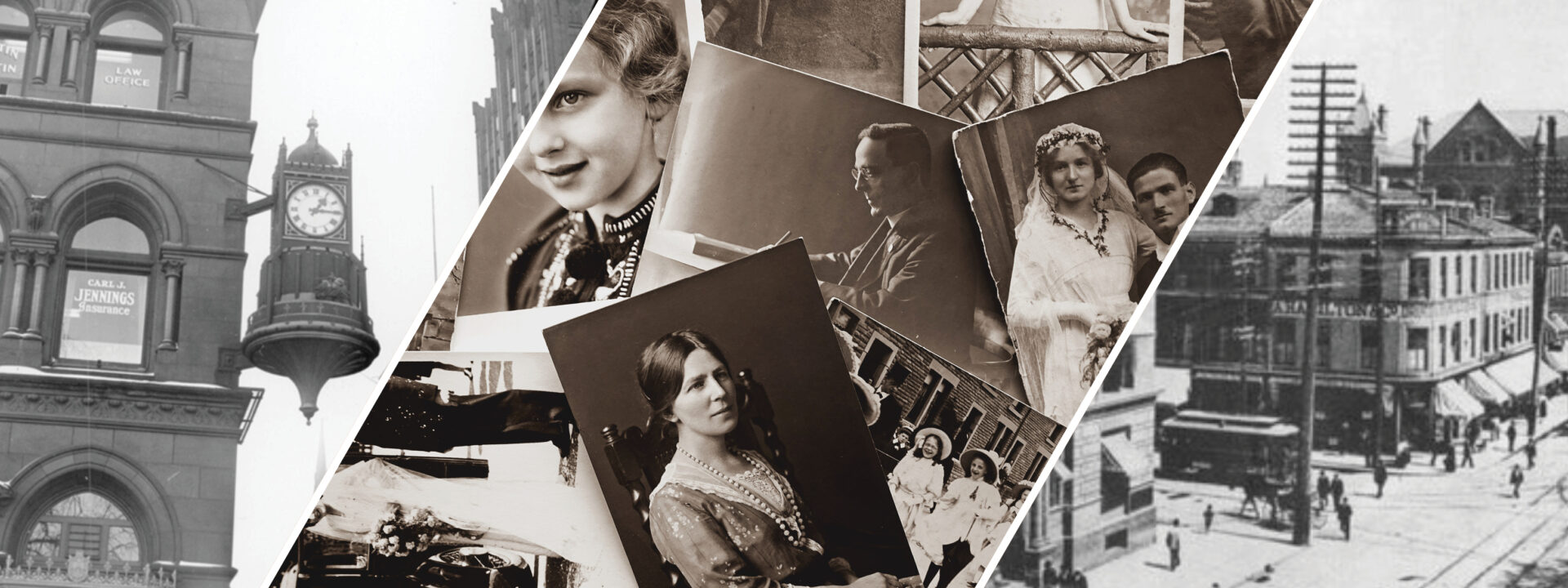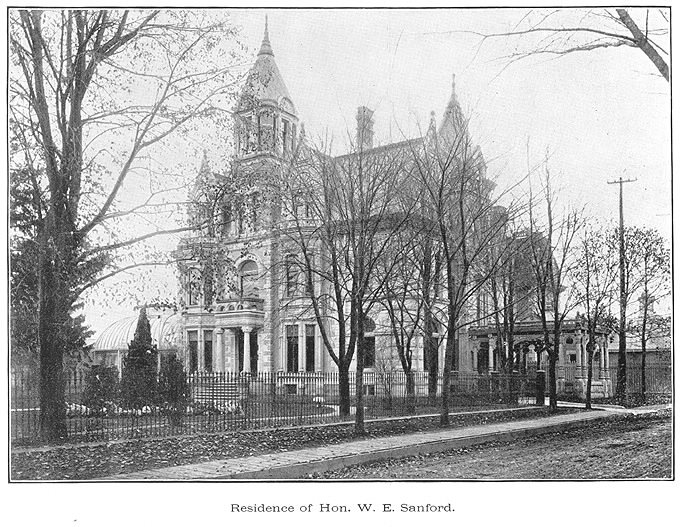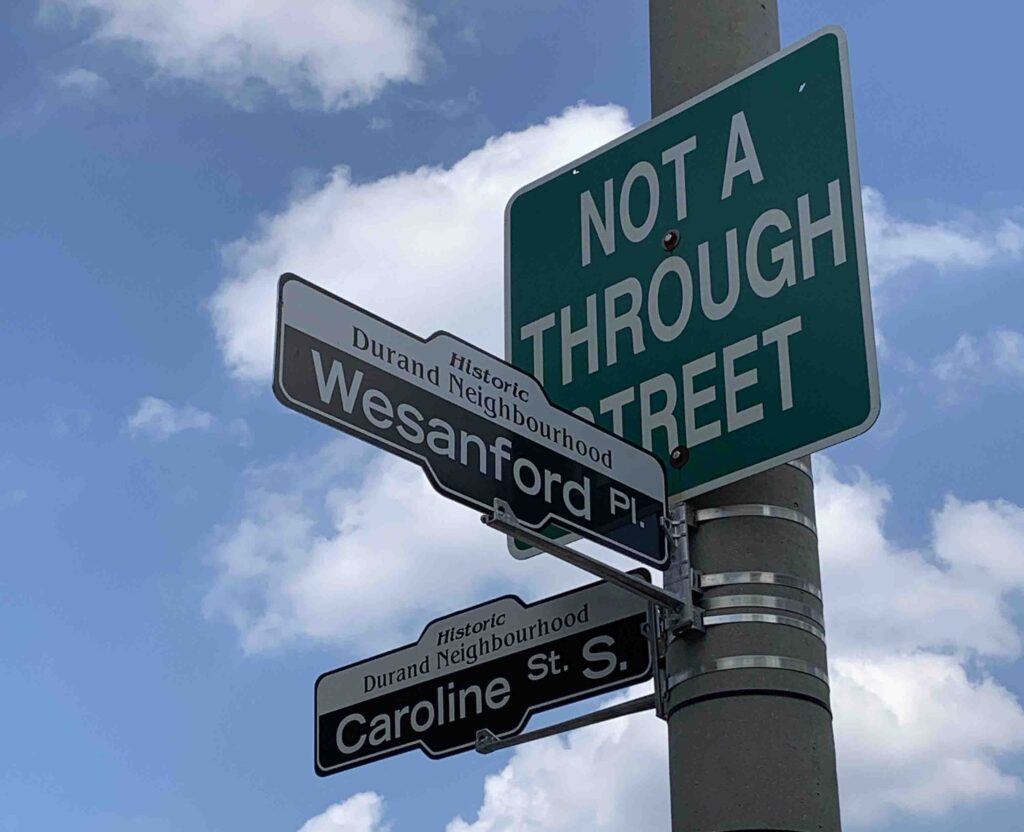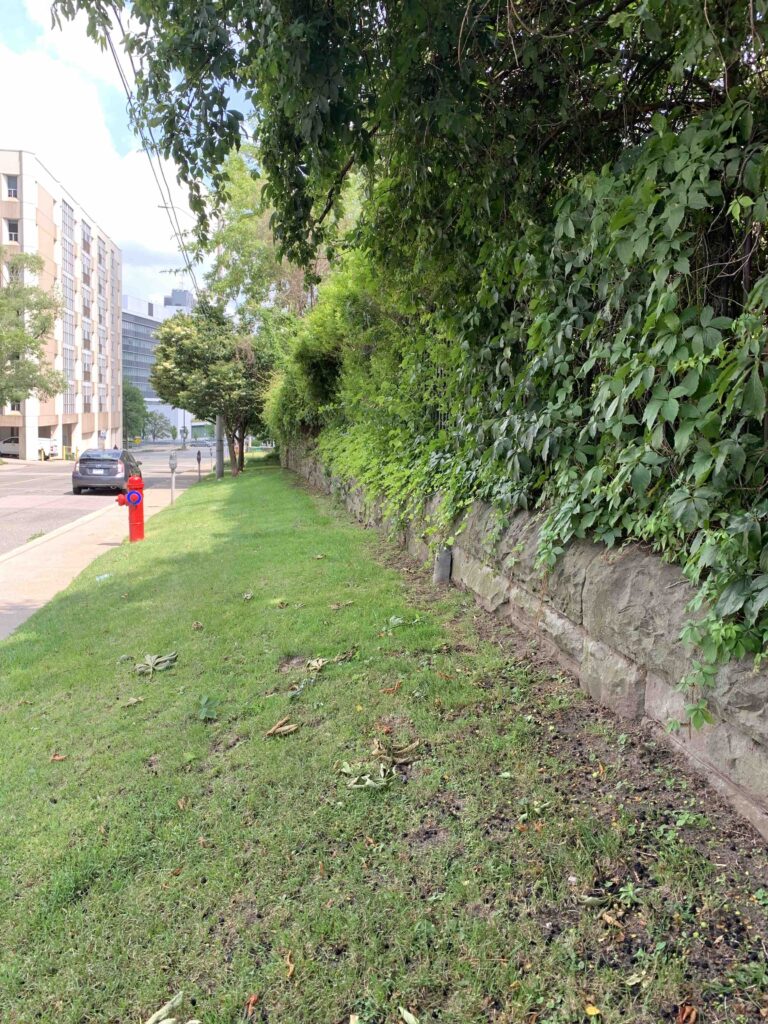A mansion lost and bungalows found

Wesanford Place was one of the most grand homes to ever exist in Durand. It was demolished to make way for 20 English-style cottages that have themselves become important elements of the city’s history.
The Durand neighbourhood is blessed with a large inventory of historical homes and buildings. That is especially impressive given the development pressures that exist because of the neighbourhood’s desirable location so close to the downtown in a growing city.
However, the neighbourhood was not always able to resist development, and over the years, the neighbourhood has seen its fair share of historical properties lost in favour of new development. This was especially true during the late 1960s and 1970s. But we are seeing a resurgence of development pressure in the neighbourhood now that the Ford government’s Bill 23 has passed and historical homes have lost much of the protections they once had. Focusing on lost heritage is important as it is a sobering exercise that lays bare the reality and risks that urban historical properties face in the 21st century. With that in mind, we turn our attention to one of the grander properties to ever exist in the Durand neighbourhood: Wesanford Place.
Wesanford Place was a sprawling property when it was first established in 1851, stretching more than half a city block bounded by Maiden Street (now Jackson Street West), Hunter Street, and Caroline Street South. The original stately home located at 31 Maiden Street was owned by tin and stove manufacturer Edward Jackson and his wife Lydia Sanford and their adopted nephew William Eli (W.E.) Sanford.

W.E. Sanford inherited the property in 1880. He quickly moved to make the property his own, taking on two major reconstruction projects that left the original house beyond recognition. In its place, was a huge 56-room sandstone mansion, which was a magnificent Second Empire-style three-storey, with a slate mansard roof with iron cresting.
The grounds were adorned with a tower, a portico with columns, a circular drive, and ornate wrought iron fencing surrounded the entire estate. The estate also included a greenhouse, spacious lawns, gardens, and a beautiful fountain. Inside, the mansion was cutting edge for the time, featuring the latest innovations including an elevator, billiards room, automatic gas lighters and electric lighting, and a telephone linking every room.
The house was also impeccably decorated with paintings, statues, and other art treasures, brought back by the Sanfords from their world travels. W.E. Sanford died in a boating accident in 1899, however his wife Harriet continued to live at Wesanford Place until her death in 1938. W.H. Yates Construction Co, purchased Wesanford in 1939 from the Sanford estate and then went about quickly dismantling the entire property. The company held an auction for all of the valuable items in the estate that brought curators from Toronto, Ottawa, and New York to acquire some of Sanford's valuable collections. After everything was auctioned off, the mansion was demolished in late 1939.
In its place, a new street was created, Wesanford Place, and 20 bungalows were constructed on the former Wesanford estate between 1939 and 1942. Unlike many other instances of lost heritage, the new development that was created fit in with the changing neighbourhood and changing times in the city. The bungalows that were constructed were in a style influenced by the English cottage.

This was a style being built across the city at the time and for years to come. However, the Wesanford bungalows, according to local oral history, were unique in that elements of the original mansion were incorporated into each of the Wesanford houses – including cast iron railings on the front porches, stone blocks in the corners of the concrete-block foundations and imported decorative tiles in the main foyers.
As well, a portion of the original stone retaining wall and metal fence still remain along Jackson Street West. In April 1997, the wall collapsed and was rebuilt in September 1997 as a concrete wall faced with the original limestone ashlar and capstone salvaged from the collapsed wall. Today, Wesanford Place bungalows have taken on their own historical importance to the neighbourhood, adding a different element of character while at the same time continuing to honour and preserve important heritage details from Hamilton’s past.

It’s also important to note that the land of the former Wesanford estate and current Wesanford bungalows will once again be facing redevelopment pressures as the confluence of Hamilton’s Downtown Secondary Plan, Ontario’s Bill 23, and the impending development of Television City across the street from Wesanford Place make the land very desirable for a developer moving forward. This is not to say that anything is imminent, but it is something to watch as development pressure once again begins to mount in the Durand neighbourhood.
Chris Redmond and Janice Brown are members of the Durand Neighbourhood Association. HAMILTON CITY Magazine is featuring the work of local historians who document the rich, diverse and fascinating history of Hamilton and area.








